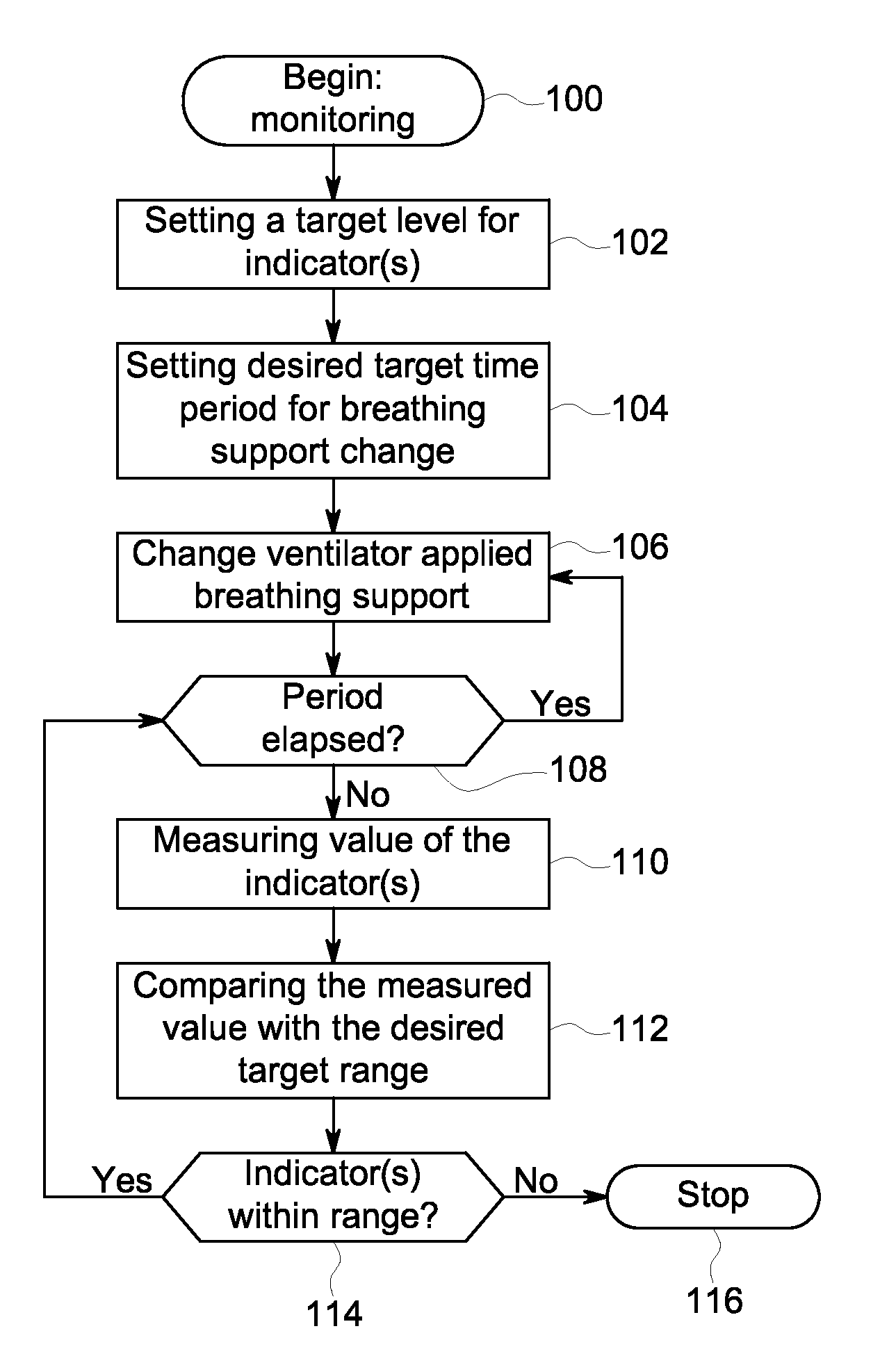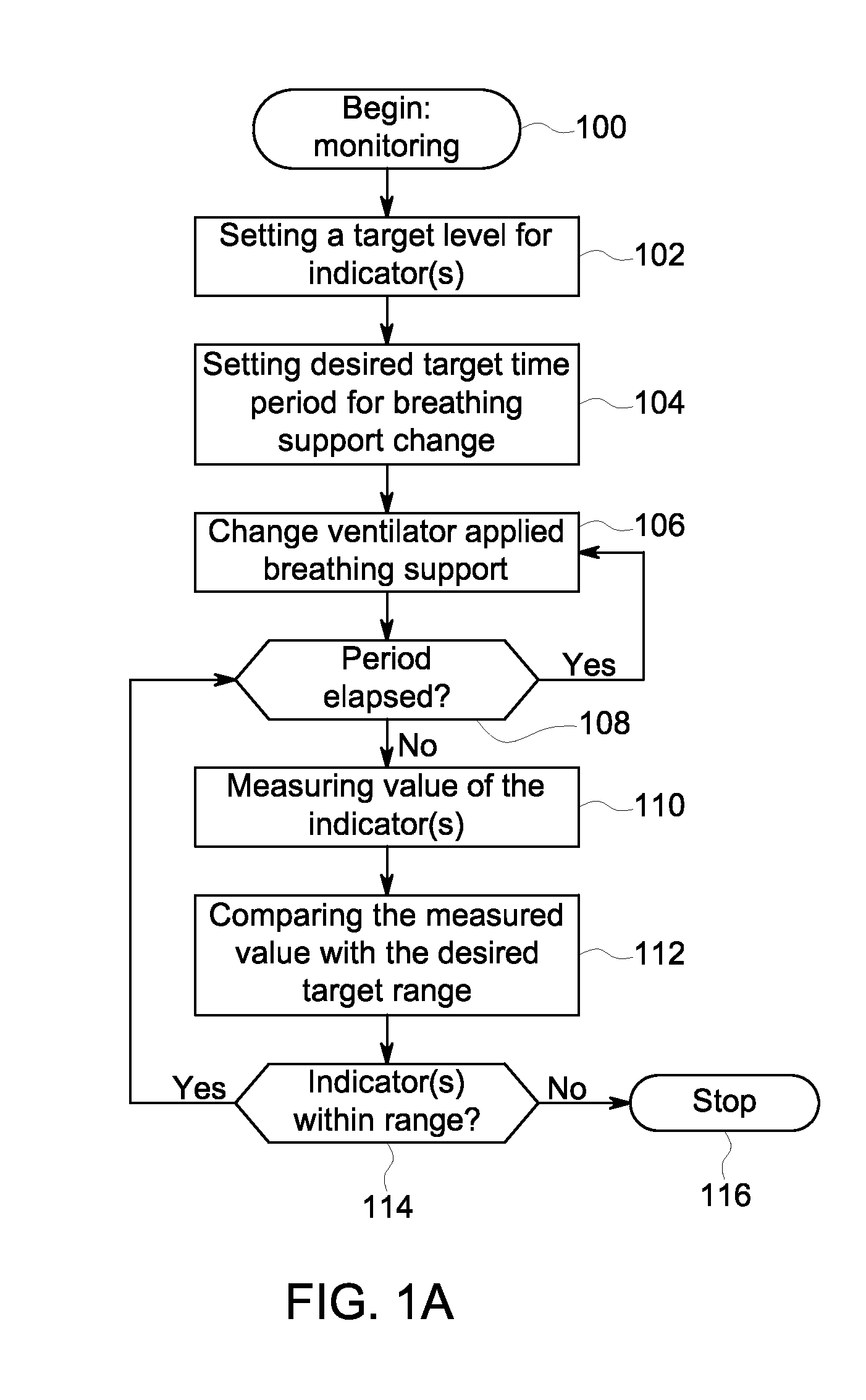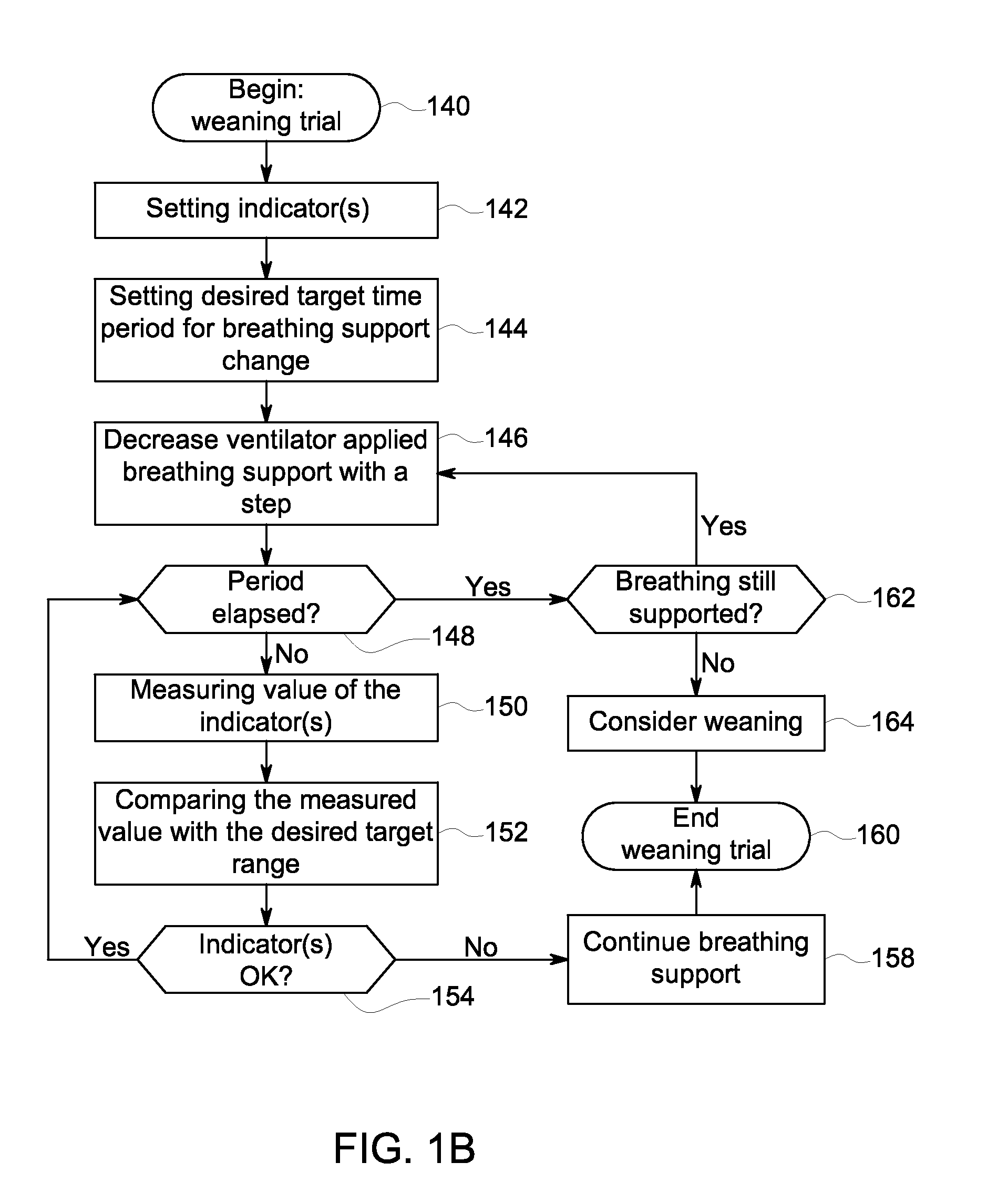Method and system for monitoring patient's breathing action response to changes in a ventilator applied breathing support
a technology of breathing action and patient, applied in the direction of valves, respirators, mechanical equipment, etc., can solve the problems of ventilator dependency, patients cannot maintain breathing of their own, and patients are among the most difficult to wean patients from artificial ventilation , the problem of ventilator dependency
- Summary
- Abstract
- Description
- Claims
- Application Information
AI Technical Summary
Benefits of technology
Problems solved by technology
Method used
Image
Examples
Embodiment Construction
[0041]FIG. 1A illustrates a flow chart of an exemplary method 100 for monitoring patient's breathing action response to changes in a ventilator applied breathing support according to advantageous embodiment of the invention, where in step 102 desired target range of at least one indicator (such as an indicator of O2-consumption) for the patient is set, after which also desired target time period for breathing support change can be set in step 104. Next in step 106 ventilator applied breathing support is changed.
[0042]In step 108 duration of the period set in step 104 is checked, whether it is elapsed. If not, the method is continued in step 110, where value of the indicator is measured. Comparing the measured indicator value with the desired target range is done in step 112. Whether the measured indicator value is within the range, the method is continued again in step 108. Otherwise the method is ended in step 116. Alternatively, the method may also progress to step 106 to change t...
PUM
 Login to View More
Login to View More Abstract
Description
Claims
Application Information
 Login to View More
Login to View More - R&D
- Intellectual Property
- Life Sciences
- Materials
- Tech Scout
- Unparalleled Data Quality
- Higher Quality Content
- 60% Fewer Hallucinations
Browse by: Latest US Patents, China's latest patents, Technical Efficacy Thesaurus, Application Domain, Technology Topic, Popular Technical Reports.
© 2025 PatSnap. All rights reserved.Legal|Privacy policy|Modern Slavery Act Transparency Statement|Sitemap|About US| Contact US: help@patsnap.com



